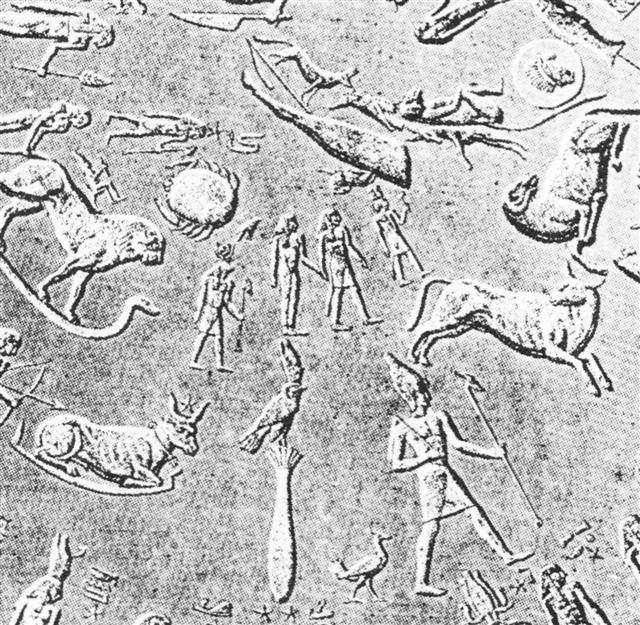2. The following 6 glyphs (Ga1-7--12) can be compared with Eb7-30-35:
At Eb7-35 we can count 73 * 5 = 365 and the solar year evidently ends (or the end is alluded to) there. Beyond Eb7-29 there is a pair of te words followed by a Saturn day and then another pair of te words. It is hard to avoid the idea of first counting 12 + 2 = 14 te in order to reach day number 14 * 29.5 = 413, perhaps corresponding to the kuhane station Tama, and then to continue with another such addition, 14 + 2 = 16, and arrive at the kuhane station Hanga Takaure.
The little takaure in Eb7-34 could illustrate how the season of takaure ('winter') is fading away (waning) and the accumulation of takaure glyphs beyond Eb7-16 would then be explained. It looks as if the pieces of the puzzle are falling into their proper places. The exceptional variant of tagata in Ga1-11 therefore presumably refers to Hanga Takaure:
The 'eyes' of tagata are outside his head, but in Ga1-11 the head is distorted into a skull of death and instead of eyes outside there are hollows inside. The arms are comparatively short and possibly therefore illustrate how the sky roof is low at this time of the year. There is a similarity between a human death skull and a crab, they have no soft parts outside, they are 'exosceletons':
(Ocypode quadrata, Martinique. Wikipedia) The word gagana is hard to interpret, and maybe it can explain why tagata in plural becomes gagata. A clue is given in a Moriori myth of creation:
If we identify the 7th son Uru with midsummer, which we have reason to believe, then the following Ngangana could be the beginning of the 2nd season, when Spring Sun has disappeared. The skull of Hotu Matua was buried, we know. In the round Dendera zodiac Cancer comes after the midsummer (midwinter south of the equator) pole where the Sun bird no longer moves (presumably has been caught in the bird snare of Tautoru and turned from a manu kake into a manu uru):
But we have no firm ground to stand on because, we have seen, the southern coastline of Easter Island describes the same stations in time as the stations along the northern coastline. With one exception, of course, viz. the curves of turning around from the southern to the northern coastline respectively from the northern to the southern coastline. The end station of the old season at Ga1-11 is located after the beginning (vaha mea) of the new season of growth, and we can guess its waxing will start from the lowest of positions. This surely means the southwestern corner of Easter Island, because the direction east corresponds to moving upwards. All evidence in form of the stars in the sky, the currents in the sea, the prevailing winds etc points at east as the direction up. From there everything moves downwards, to the west as a result of the law of gravity. Even the name Poike means the place aloft. Only Moon moves against this flow, she represents the counterforce to gravity. Trees, people, the flames in a fire, and other living beings follow the example of Moon by growing. They stretch upwards. The glyph type tagata evidently stands for the apex of this journey of upwards growth to 'high summer'. It is 'proven' by Ha6-2 at 'noon' in the 'daylight calendar':
We can therefore add tagata to our growing dictionary:
From my earlier summary of tagata:
|














